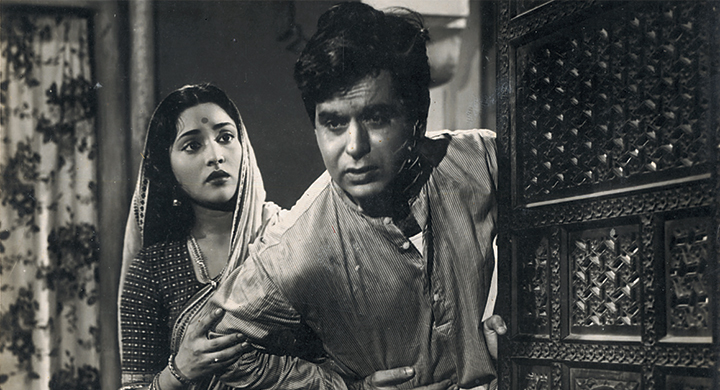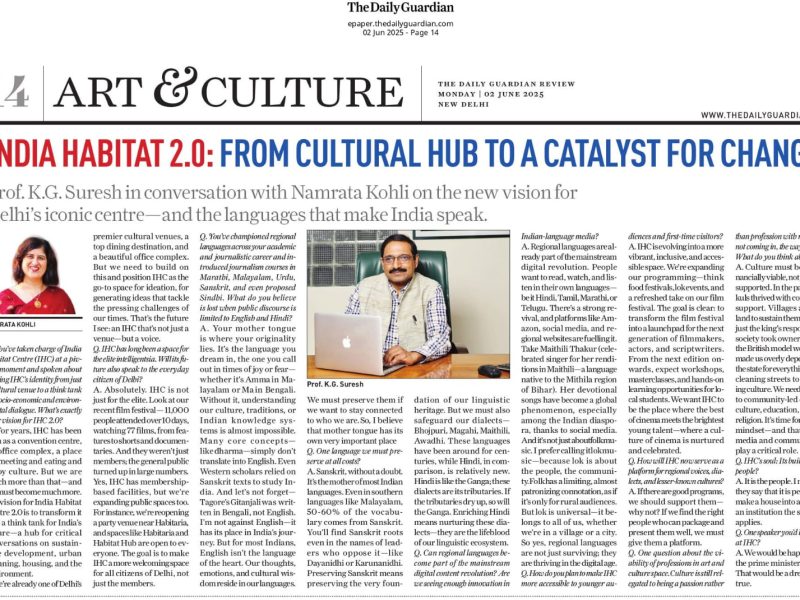“Cinema is the single greatest cultural discipline of India”- Neville Tuli, Founder & President -The Tuli Research Centre for India Studies (T.R.I.S.) tells Namrata Kohli in an exclusive conversation in the backdrop of his exhibition “The World’s Greatest Mela – Respecting India’s Cinematic Heritage” at India Habitat Centre, New Delhi. A curated collection of 400,000 items from Indian cinema including rare film posters, vintage booklets, hand painted artworks, promotional material, original publications were showcased on themes ranging from The Silent Era, The Kapoors- First Family of Cinema, The Devdas Legacy – From Barua to Bimal to Bhansali, Mughal-e-Azam, Cinematic-Chemistry- from Raj-Nargis to Hema-Dharmendra. Student groups from various educational institutions visited the exhibition and enjoyed learning about history of Indian cinema
Excerpts from the interview:
How do you look at Indian cinema and its impact on Indian culture?
Cinema is the single greatest cultural discipline of India which has taken on the role of entertainment, art, box office, glamour, intellectual debate. But it hasn’t yet taken on the role as the source of education. And if you can be learning with text, visual, audio- all moving together, you will see the energy change. Cinema gives you a multisensory experience. And when your emotional intelligence merges with the aesthetic, the intellectual, the literary, you’ve the best chance to learn. Every subject in the world must allow cinema’s voice to be part of their educational framework. Everything that India has tried to tackle in the last 120 years, cinema has been encapsulated here in some form or the other.
Your cine-exhibition is all about posters of films of the yore. How do these capture the essence of those movies and convey that slice of history of the period in which they were shot?
The films are gone and frankly no one has the patience to sit through 3 hours of a 1950s film, but these artworks capture the moment and the energy of that moment. For example, when students come to Mughal-e-azam wall and I put on that great Qawwali, and start my narration, it has huge impact. Over fifteen schools and colleges have come, and I find the children transformed after the experience. Today we have children with the worst of impairments, down syndromes, cerebral palsy and what not. And still, in that 1 hour I had with them, one can put that energy of the love that India brings and carries every day through the world of cinema. I believe that cinema is the closest cultural discipline to the rhythm and energy of India.

You talk about cinema being an important resource for educating today’s youth. What can cinema exactly teach this generation?
I give you the simplest, most obvious failure of our education system. And that is in the way we believe knowledge is driven by text. The visual is as powerful a source of knowledge as is the text, as is the audio. In today’s generation, visual literacy is so low in our country, and yet historically, India is a visually driven civilization.
We don’t even know the basics of line, composition, texture, colour, forms. Instead, we have a kind of mechanical, exam driven process which takes out the joy of learning. When there is no joy in learning, there can be no concept of self-discovery.
Also our children have no sense of history. In today’s generation no one can identify Sehgal. Now you imagine the most famous man in India in the 1930s and its forgotten. History is absent because of our flawed education system and also because parents only wish to look forward. But there are no wings without roots. Cinema brings a sense of history and acquaint this generation with the values of the times their grandparents lived in.
What is the strength of India and how is India different from the West?
The greatest strength is the nature of its diversity, which has never been fully appreciated, especially by the educational system, because the world is driven by a specialized concept of knowledge. The West has already destroyed so much of the complexity of daily life. They don’t allow the camel and the cow and the goat and the dog to walk on the street with your motor car and your truck. They don’t allow the religions to play with spirituality and poetry and philosophy the same way as we do in India. India still is a land of deep emotional intelligence. The systems of materialism haven’t overcome the way we live our lives.

How did you learn about art?
When I started 30 years ago, I also did not know the ABC of the subject for Indian art. And my first objective was to travel to the great architectural monuments of India because that is where the greatest knowledge base resides. Next was cinema which is one level below the architectural heritage and the next level covered music, dance, poetry, philosophy, fine arts, crafts. My idea was to understand the pulse of India as a civilization.
It has taken me thirty years of due diligence. Take the case of Rabindranath Tagore, one of the greatest minds India has ever produced. He started painting and drawing at the last stage of his life, when he was past sixty. I feel, it takes you a couple of decades to build your craft and before you can be of any critical value to your society.




